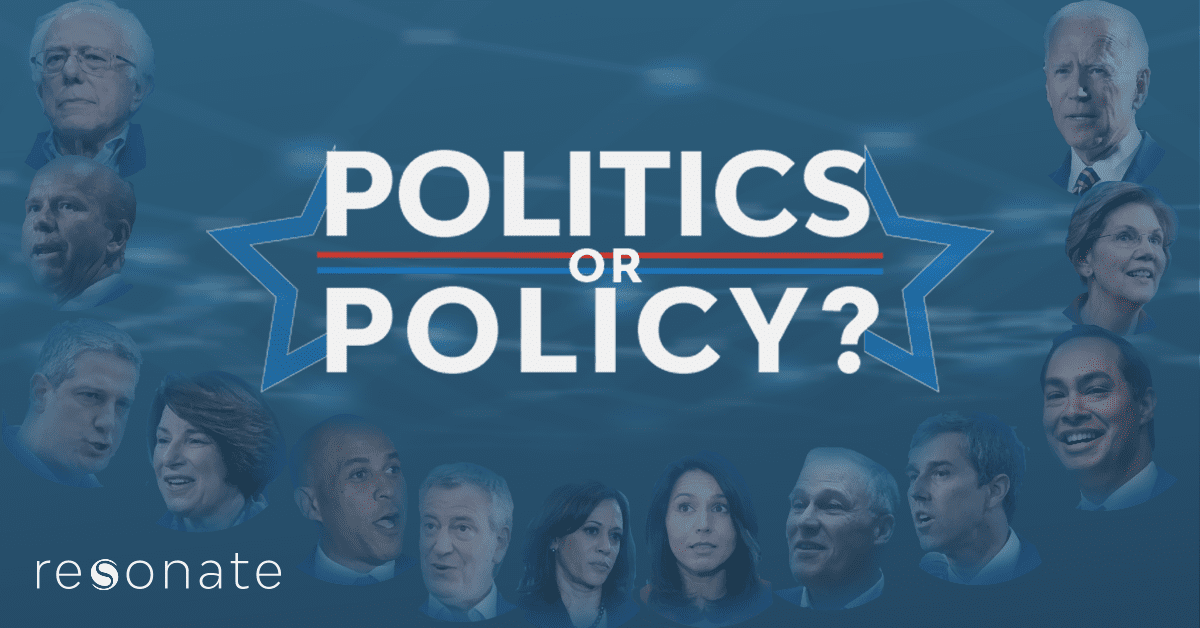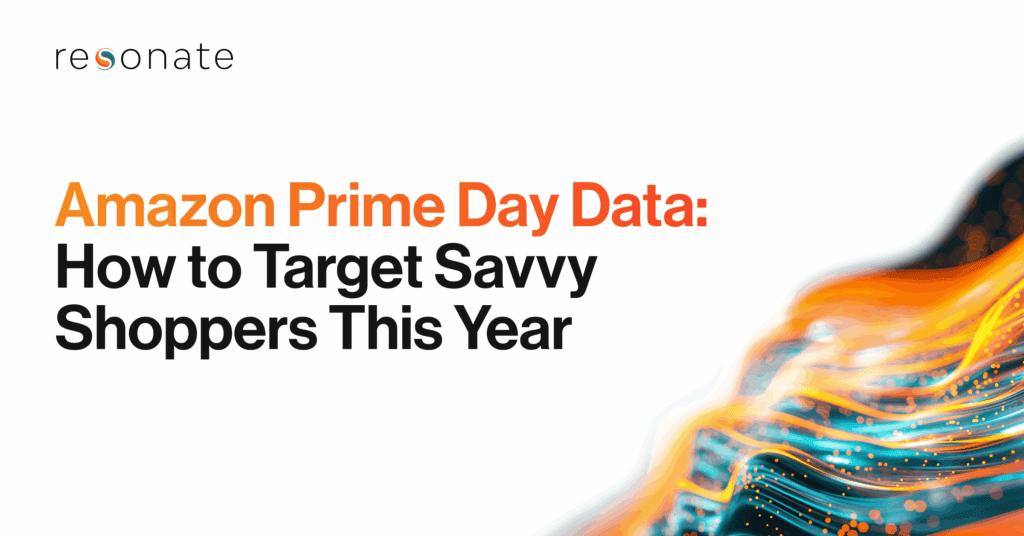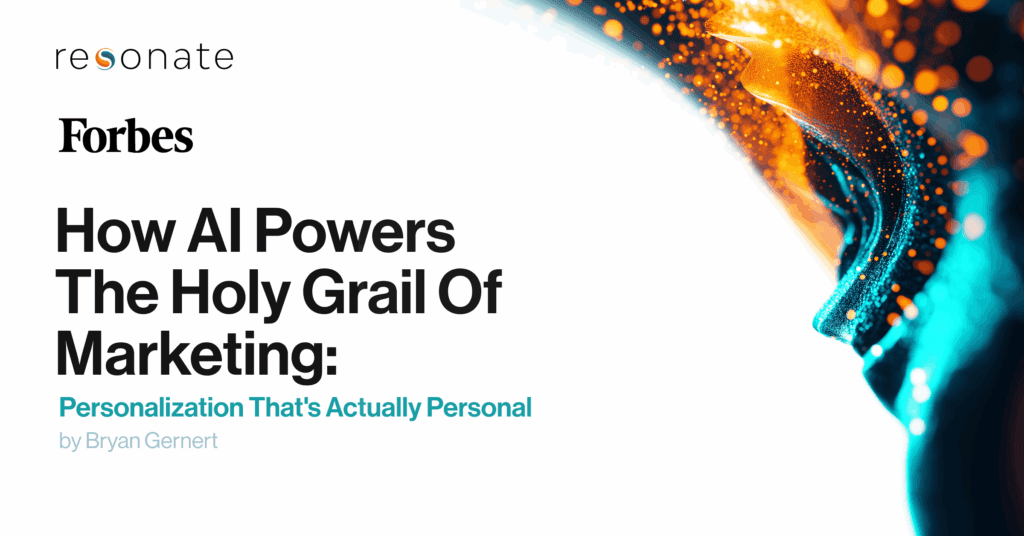What Does the Democratic Debate Say About Partisanship?
The recent Democratic debates spawned a healthy amount of post-show discussion about who outshined who. So, what does the Democratic debate really say about partisanship? Political polls and the New York Times show that key takeaways from the event were the economy, health care, immigration, gun control and climate change. But one topic was noticeably absent: direct partisan attacks at the GOP and President Donald Trump.
Does this mean that partisanship is dead? Not at all, but it may be a nod to some of Resonate’s Hidden Dimensions of the Voter Landscape, which have shown that “liberal” ideals like gun control and the environment are important to voters on different sides of the political spectrum for different reasons. But there’s a lot more crossover among individuals who describe themselves as liberal or conservative than you may think. Many of the candidates at the debates were right to focus on policy, but they may be missing an opportunity by only addressing policies traditionally seen as bastions of the political left. They could be ignoring messaging that key persuadable voters need to hear to galvanize their support for a politician. According to the Resonate Voter Landscape, these persuadables make up a huge percentage of the American population. This raises a question: Does keeping things “left” or “right” in campaign messaging alienate large numbers of people from politics? Is this why voter turnout isn’t so great, and get-out-the-vote efforts are necessary requirements for elections? AI-driven, real-time analysis of the American electorate shows that this type of narrowly-focused partly line strategy may be causing voter alienation.
Does Partisan Politics Affect Voter Turnout?
Here’s the truth about partisan politics: It’s entertaining. Distilling an argument down to an ‘I-win-you-lose’ or a ‘my-team-beat-your-team’ binary function is competitive and feeds ego. Culturally, we like sports and movies with a villain and a hero. Competition is undeniably human. But, according to Resonate Voter Insights, there are many other attributes that you need to understand about a person in order to engage and persuade them. The personal, individual “why” holds the key to motivating people to your candidate or cause. When matched with the largest voter survey in the country, Resonate continues to see some very surprising realities about the political views of Americans thanks to machine learning, AI-driven analysis.
Multiple studies have shown that partisanship drives voter motivation and boosts turnout, but in an environment where people increasingly dislike politics and politicians, the smart money is on using a deep understanding of personal values, motivations and factors of voters to persuade key segments of a changing electorate on issues that are important to them, even if it is against the norm.
Does This Mean That Hyperpartisanship is Posturing?
Inertia is tough to stop. When partisan politics increase turnout, even when it alienates voters, political campaigns and consultants are happy. National Public Radio has found that partisanship drives more clicks online, increases news program ratings and generally means higher levels of user engagement. President Trump, love him or hate him, has perfected the art of creating short, extremely partisan sound bites or tweets that resonate with a core part of his base but also get the attention of most voters. This type of campaigning distills politics to the ‘I-win-you-lose’ game that persuades some voters to jump on the bandwagon, but it also drives the growing alienation that constituents are feeling towards politicians. Astute political campaigns know this, but they shy away from focusing on issues versus partisanship, because in the heat of the moment, whether its via tweet, a 30-second debate response or a television ad, partisanship sells, at least in the short run. In the long run, partisan politics will probably drive more voters into the disaffected groups we found in the voter landscape.
How Does This Jive With Political Polls?
AI-driven deep learning shows there are less stark differences among voters than the media and political reality would lead one to believe. Political polling shows the electorate is increasingly dissatisfied with their elected officials and with the government in general. This exposes a massive disconnect between what candidates and elected officials are saying and what constituents believe, what they value and ultimately what they want. Based on analytics from the Resonate platform, we’ve entered a reality where people are relenting to voting based on anger and things they don’t want, rather than being energized and motivated to vote for the positions and issues they support.
It’s clear that political campaigns face unexpected storms caused by a shifting partisan mood. The Resonate platform allows political organizations to easily activate managed media campaigns to precisely reach the most accurate voter segments. Think of us as your partner for navigating the unpredictable nature of hyper (and inflated) partisan politics and influencing voters on the issues they genuinely care about, in real-time.
Contact us today for a free demo and see firsthand how the most sophisticated campaigns in the country are locating and communicating with the voters who will propel them to victory in 2020.



